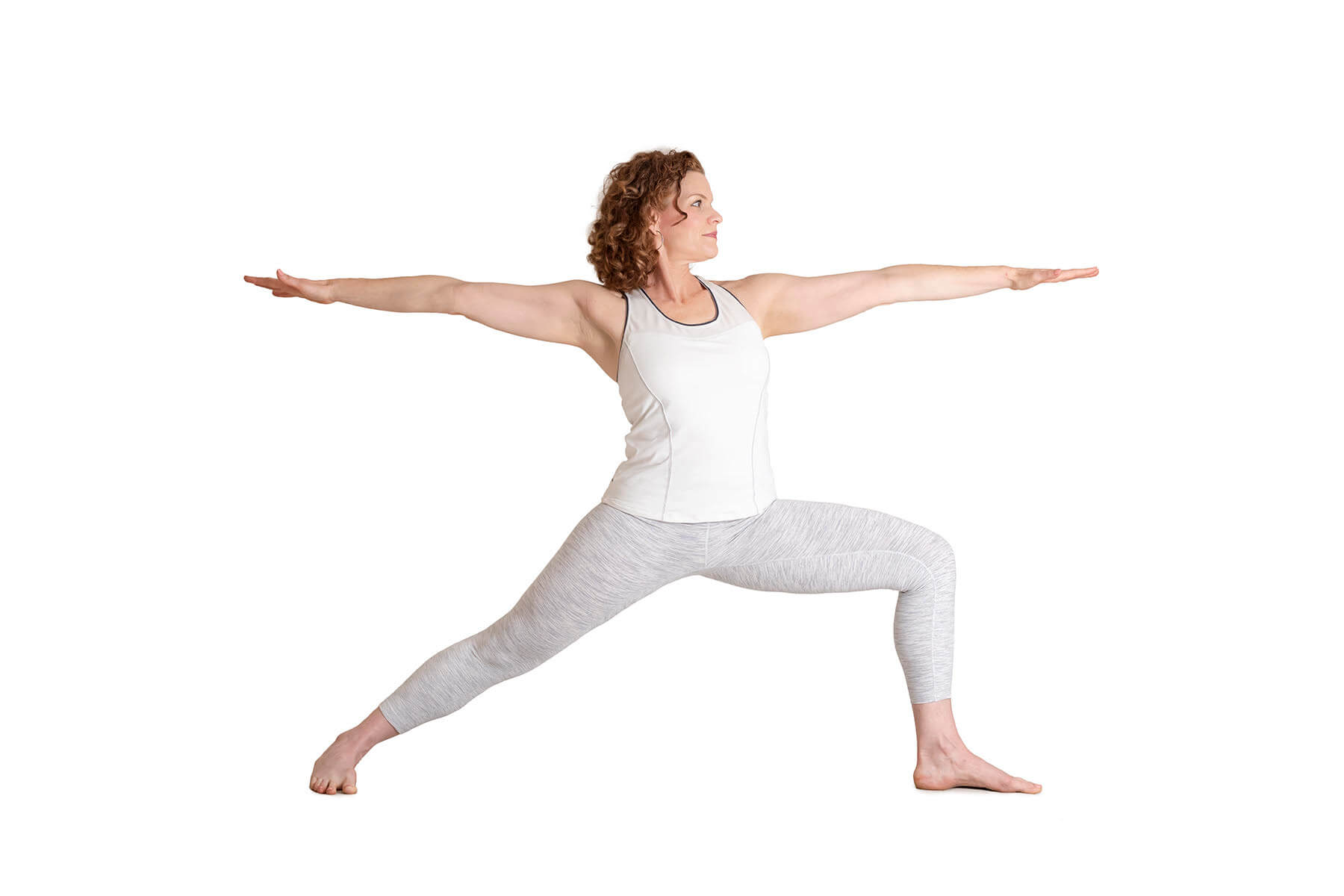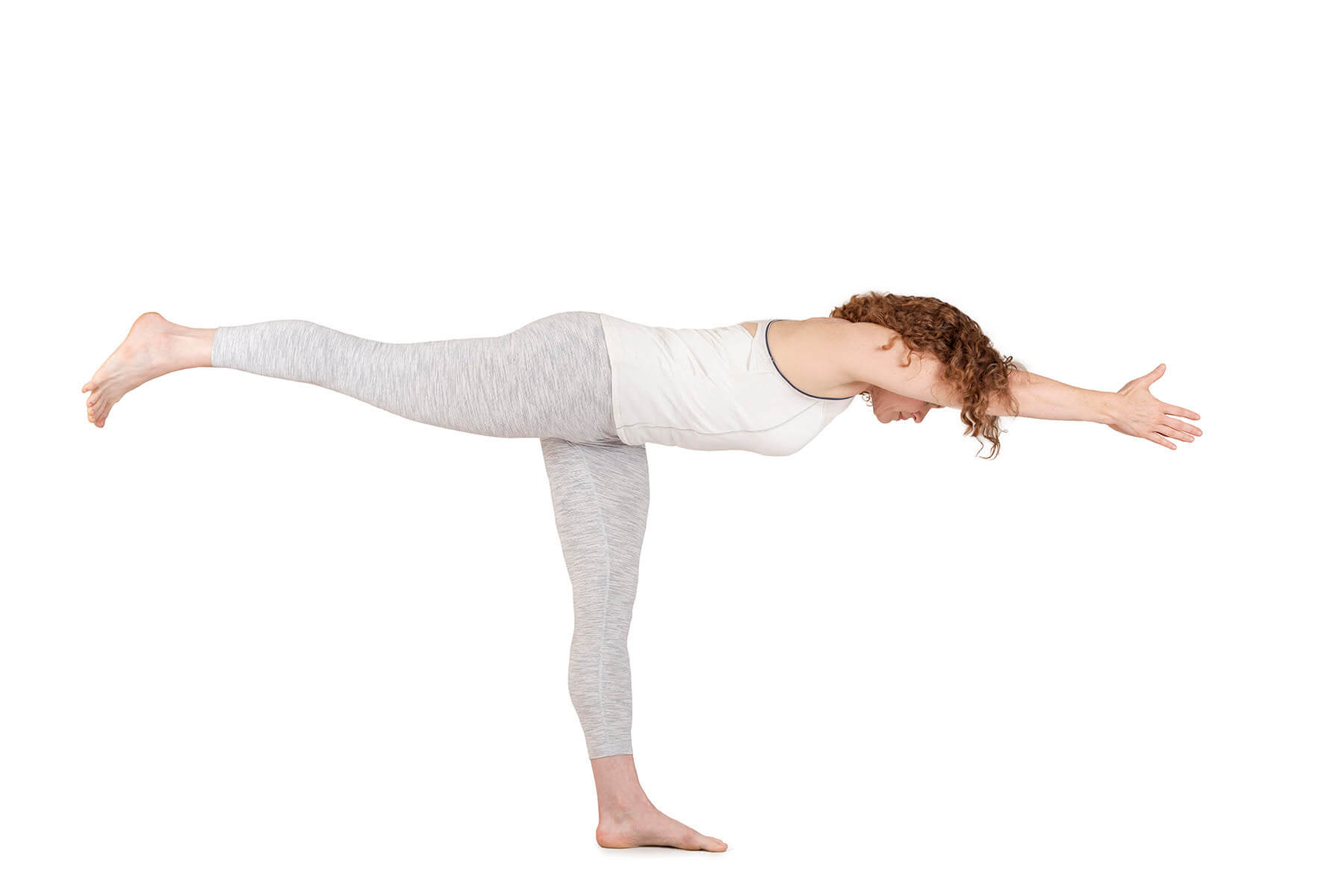For some of us, the strong Warrior poses are invigorating and empowering. For others, they’re demanding and effortful.
For many of us, they’re all of these.
The Myth of Virabhadra
The three Warrior poses are named after Virabhadra, the fierce warrior that’s a form of Lord Shiva. The story of Virabhadra goes like this:
Once upon a time, in the celestial realms, Lord Shiva and a young woman named Sati fell madly in love and wed. Sati’s father, King Daksha, didn’t approve of his daughter marrying a wild yogi like Lord Shiva.
To show his disapproval, King Daksha through a lavish party, but didn’t invite Shiva and Sati.
When Sati heard about this, she begged Shiva to go to the party with her anyway. When Shiva refused she went alone.
When she arrived her father jokingly announced that she must have come to her senses and left her husband. Sati was not amused and she defended Shiva. Once she realized her father would never understand, she announced:
“Since you have given me this body I no longer wish to be associated with it!”
Determined, she took her seat on the floor in the middle of the party and closed her eyes. She visualized Shiva and then through pranayama and other yogic exercises she cultivated her Agni (internal fire). Moments later she burst into flames, leaving the body her father had given her.
When Shiva heard about Sati’s death, he became enraged. He tore out a tuft of his hair and from it, created the fiercest warrior, which he named Virabhadra. Shiva instructed Virabhadra to go to the party and seek revenge for Sati’s death.
When Shiva came to the party to see what Virabhadra had accomplished, he was heartbroken. His rage turned to sadness followed by compassion. He searched for Daksha, finding only his body.
Filled with remorse Shiva found a goat’s head and placed it on Daksha body, bringing his father-in-law back to life. After Daksha awakened, he recognized Shiva’s kindness and bowed.
Read: An Introduction to Lord Shiva: The Destroyer
The Significance of the Warrior Poses
The Sanskrit word vira means hero and bhadra means friend. The three Warrior poses are named after Virabhadra’s actions at the party that night:
Virabhadrasana 1: Virabhadra entering the party by breaking through the ground and rising up from within the earth, holding a sword in each hand.

Virabhadrasana 2: Virabhadra spotting Daksha and getting ready to strike.

Read: Cultivating Power in Your Practice With Warrior Two Pose
Virabhadrasana 3: Virabhadra moving swiftly and precisely to decapitate Daksha with his sword.

In the story of Virabhadra, Shiva represents our higher selves, Sati represents the heart, and King Daksha represents the ego. But the myths and teachings of yoga aren’t destined to stay up in the celestial realms, of course. They’re meant to be brought down into our lived experience.
We can interpret the myth of Virabhadra as symbolizing the inner work of the yogi. The power we gain in yoga is meant to bolster us in doing battle with the limiting tendencies of our minds.
We use our strength to triumph over our small, limited selves for the sake of experiencing the expansive nature of the heart. Virabhadra, after all, is a warrior for love.
To further understand how we might integrate the lessons of Virabhadra into our lives and practice, I asked yoga teachers to share their experience of the Warrior poses:
“In Warrior III, I feel brave, balanced and strong. I feel like I have the strength to face even the most awkward and difficult situations. Believing in myself and trusting the fact that all is temporary, I feel that all is meant to be.”
Emily McConnell
“I wrote a chant for each Warrior to use in my kids' classes. I encourage the kids to use their big, strong voices when reciting these chants in the warrior poses. My hope is that they add to the physical power of the pose by recognizing the power of their own voices.”
Heather Elson
“They have provided me an opportunity to rebuild strength and feel empowered after childbirth. I use the Warrior I and II legs and torso in my overnight settling of my newborn. They have rebuilt strength and engagement in my pelvis and given me something meaningful to do for myself in the early hours when you’re battling fatigue and rocking a baby.”
Shannon Park
In your own practice, consider how the warrior poses help you embody the heroic qualities of fearlessness, invincibility, and fortitude.
Read: Top Tips for Your Best Virabhadrasana Series
How could these virtues serve you in your life?
As spiritual warriors on the path of yoga, may our practice help to foster the strength and resilience to rise up and meet the challenges of our lives with courage.
May they allow the power of love to triumph in our beings and guide our actions in the world.
During These Times of Stress and Uncertainty Your Doshas May Be Unbalanced.
To help you bring attention to your doshas and to identify what your predominant dosha is, we created the following quiz.
Try not to stress over every question, but simply answer based off your intuition. After all, you know yourself better than anyone else.